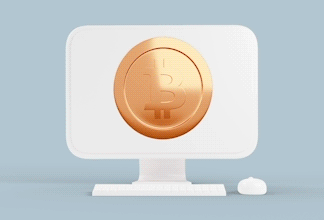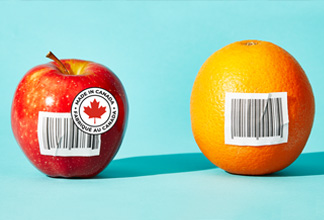Bank of Canada Opens Door to April Rate Hike
Written by Josh Nye | Published on October 28, 2021
Written by Josh Nye | Published on October 28, 2021
A version of the following report was published by RBC Economics on Oct. 27, 2021 under the title BoC Ends QE, Advances Rate Hike Timing.
Strong inflation data and growing concerns about the persistence of price pressures intensified focus on the October 27 Bank of Canada (BoC) meeting. The central bank responded with a more hawkish message than we anticipated, bringing forward the expected timing of economic slack being absorbed (now in the middle quarters of 2022 compared with the second half of 2022 in July and September's statements) and clearly opening the door to a rate hike in April. The other key policy decision—ending QE by moving into the “reinvestment phase" of that program—was as expected and appropriate given progress in the economic recovery, but nonetheless likely added to the market's hawkish interpretation.
Our call has been for two rate hikes in the second half of 2022 (July and October), though risks were already tilting toward earlier liftoff. An April start to tightening looks increasingly likely as long as we see continued progress in the economic and labour market recovery over the next six months. Today's messaging doesn't go quite as far as the 100 basis points of tightening by the end of next year that markets were pricing in ahead of the meeting, though the move higher in bond yields and the Canadian dollar shows investors see some validation of that view.
The shift in timing for the economy reaching full capacity was despite the BoC downgrading its gross domestic product (GDP) growth forecasts for this year (5.1 per cent vs. 6.0 per cent in July) and next (4.3 per cent vs. 4.6 per cent in July). Those forecasts are now closely aligned with our projections. To square that with an earlier output gap closure, the bank narrowed its assessment of current slack and lowered its potential growth projections. While we agree that there is significant uncertainty surrounding the current degree of slack and pace of potential growth, the BoC massaging its forecasts is this way only adds to the perception that today's hawkish shift is more about inflation concerns than the growth outlook.
In that regard, inflation saw the most notable revisions in today's updated projections. The Consumer Price Index (CPI) has surprised to the upside in recent months, and combined with firmer oil prices and more persistent price pressures (including supply bottlenecks) than previously expected, the bank revised its 2022 headline inflation forecast a full percentage point higher to 3.4 per cent, matching its revised 2021 forecast. Such an extended period of above target inflation likely has the bank worried that higher inflation will become embedded in expectations and today's statement noted it is closely watching inflation expectations and labour cost growth. We've seen an increase in near-term inflation expectations but medium-term expectations remain fairly well anchored, and despite tight labour market conditions there are few signs that wage growth is accelerating sharply at this point. As long as that remains the case, we think the bank will raise rates gradually in 2022 and 2023.
Josh Nye is a senior economist at RBC. His focus is on macroeconomic outlook and monetary policy in Canada and the United States.
RBC Direct Investing Inc. and Royal Bank of Canada are separate corporate entities which are affiliated. RBC Direct Investing Inc. is a wholly owned subsidiary of Royal Bank of Canada and is a Member of the Investment Industry Regulatory Organization of Canada and the Canadian Investor Protection Fund. Royal Bank of Canada and certain of its issuers are related to RBC Direct Investing Inc. RBC Direct Investing Inc. does not provide investment advice or recommendations regarding the purchase or sale of any securities. Investors are responsible for their own investment decisions. RBC Direct Investing is a business name used by RBC Direct Investing Inc. ® / ™ Trademark(s) of Royal Bank of Canada. RBC and Royal Bank are registered trademarks of Royal Bank of Canada. Used under licence.
© Royal Bank of Canada 2021.
Any information, opinions or views provided in this document, including hyperlinks to the RBC Direct Investing Inc. website or the websites of its affiliates or third parties, are for your general information only, and are not intended to provide legal, investment, financial, accounting, tax or other professional advice. While information presented is believed to be factual and current, its accuracy is not guaranteed and it should not be regarded as a complete analysis of the subjects discussed. All expressions of opinion reflect the judgment of the author(s) as of the date of publication and are subject to change. No endorsement of any third parties or their advice, opinions, information, products or services is expressly given or implied by RBC Direct Investing Inc. or its affiliates. You should consult with your advisor before taking any action based upon the information contained in this document.
Furthermore, the products, services and securities referred to in this publication are only available in Canada and other jurisdictions where they may be legally offered for sale. If you are not currently resident of Canada, you should not access the information available on the RBC Direct Investing Inc. website.

The U.S. reciprocal tariffs announced have been large and broad-based, but critically exempt Canada and Mexico (at least for now)

Investor interest in Bitcoin is increasing – learn about crypto ETFs

The effects of tariffs can be wide ranging, both economically and behaviourally.